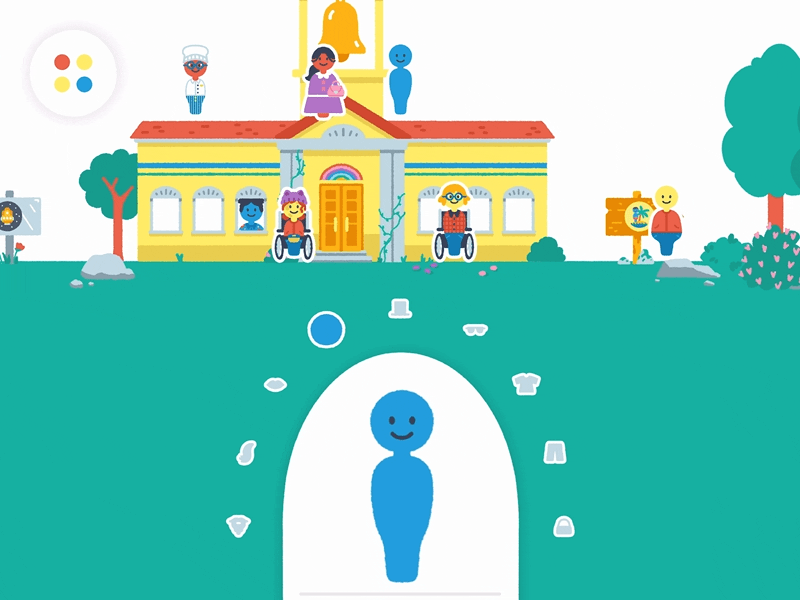Modern Parenting: Why You Don’t Have to Be a Picasso to Foster Creativity in Your Family
By: Dr. Michael DeSchryver, PhD

Baby Bach. Baby Van Gogh. Baby Mozart. We had them all. Our first child arrived in 2002, and it wasn’t long before this mash-up video of toys and classical music got our attention. We didn’t watch the videos all day every day, but Vivian and Vincent Van Gogh became part of our family. You may not have heard of Baby Einstein DVDs, but for their time, these products were the multimedia entertainment for kids (and adults alike!).
We generally tried to watch them with our kids, making every effort to foster interaction and engagement. As an educator and a psychologist, we knew that video is inherently passive, and didn’t want our kids to be Baby Einstein zombies. However, as busy parents occasionally do, we may have sometimes plopped our kids on the floor, popped in a DVD, and snuck out to the kitchen to prepare dinner in relative peace. Ahhh…the Baby Bach years.
Twenty years later, I’m sending my kids off to college, and I’m jealous of you, partly because my kids are off to college, but partly because you have so many more compelling media choices to use with your kids. The current digital toys are just so much better than what we had, and this was never more clear to me than when I met the creators of Pok Pok!
Pok Pok Playroom is an amazingly interactive and insightfully designed experience that provides the freedom and flexibility for kids to just explore, play, and be creative. As a parent, I wish I had a time machine so I could swap a few hours watching Pavlov the Dog with my kids for a few hours playing Pok Pok’s Musical Blobs together. Well, of course, as any parent would tell you, if I really had a time machine, I’d go back and fix a few of my own parenting mistakes. While there, though, I might sneak in some Musical Blobs sessions…
That said, I really want to bring this post back to a bigger picture that I see in Pok Pok Playroom. It represents to me what could be just one of many key experiences within the creative family ecosystem you likely want to cultivate in your family.
You are a discriminating parent. You heard about Pok Pok from a friend, saw something about it in social media, or stumbled across it on the App Store. You like that it is a form of creative play, and understand the increasing importance of creativity in society. Great. You are on your way.
However, Pok Pok Playroom is just one piece in a bigger puzzle. Creativity is much more than any single activity. For different people, it can be an ethos, a lifestyle, a mindset, a process.
In my house, creativity can be silly, like waiting for your wife at the airport gate with the kids, all dressed in pajamas. It can be captivating, brilliant bolts and flashes of heat lightning that highlight crazed cloud formations in an otherwise black sky. It can be random and anti-disciplinarian, arriving home from work just in time to judge found-ingredient bake-offs for a gaggle of screaming tween girls in what used to look like your kitchen! Any number of factors can help foster creativity in your family, but know that you are a big part of the system. As a creativity researcher and teacher, I have worked with hundreds of teachers to help to foster creativity in their students. We all agree, the teachers themselves need to model, and live just a bit more, the creativity they want for their own students. The same applies to parenting.
Oh great! Now I need to set aside an hour every night and watercolor like Monet!? Nope. Not at all. For at least three reasons. First, cultivating creativity in your family does not have to take a lot of time. Second, you don’t have to reinvent yourself. Finally, and this is really important: creativity is not just art, music, and poetry. The arts certainly can be part of your creative self/family, but creativity is everywhere. Thank goodness. If you can find my fourth grade art instructor, or my middle school piano teacher, you’ll know why this is such an important distinction to me.
So, what’s the secret?
Well…I have so much I want to say…but let’s start simple. For now I want to share with you my newest fascination as it relates to living more creatively. It is the notion of Wonder.
What is Wonder?
Depends on who you ask. John Greene uses the poetic phrase “transitory enchanted moments.” Eric Weiner calls it “A deep and abiding sense of awe” and “the capacity to be amazed.” I like to say, you know it when you see it, so let’s not get sidetracked by definitions.
What I do know is that kids are full of Wonder. They can be amazed by a beetle. Or a pancake in the shape of a snowman. Or a teenager wearing the worst Paw Patrol dog costume you’ve ever seen. But, what about us, the adults in the room? The ones who gotta have dinner ready by six or all hell breaks loose, who last slept for more than 4 hours straight in 2015. Can we still experience Wonder?
Of course we can. How? Well, for starters, you don’t have to be in Giza, or Rome, or Machu Picchu. Lucky you if you are, but the Wonders of the World are expensive and time-consuming. You also don’t have to meditate for three hours. (Though meditation is a research-based way to connect to your inner creative. Maybe more on that another time). What then? Well, Wonder is often the result of serendipitous moments, the kind that can’t really be planned or sought. But, you can leave room for them to occur, by being a bit more open to the world around you.
Let me go back to the heat lightening example from above. It happened a few weeks ago, and I hadn’t set out to find Wonder. In fact, I was in a pretty $%^&&@ mood and just decided to go for a walk to clear my head. At the time the lightning started, my mind was racing with thoughts. But, I was able to let that all go. It sounds easy, and I’ll be honest, it does take a little practice. From a psychological perspective, it involves a form of defocused attention, that allows you to be open to surprising events, even if you are lost in your head.
So, nature is always a good place to be open to Wonder. It is one of the reasons I love the new Forest toy in Pok Pok Playroom. Beyond creative play, it is designed in a way that can scaffold a sort of Wonder for nature in your kids.
What else, though? I know you can’t always get outside for some alone time. Well, personally, I have always been amazed at how the human body moves in space. I can still remember the first time I saw Baryshnikov dance. I was awestruck. And it wasn’t the music or the dancing, per se. It was the way he launched himself so effortlessly and flew through the air. When bodies like his physically do things most other humans cannot, I’ve always been amazed. Usain Bolt, Renaldo, Paralympic legend Jessica Long. They all evoke a sense of Wonder for me. Even better, with YouTube, I am never more than a click away from some Instant Wonder.
What else fosters Wonder? So many things, but I can’t speak for you. Wonder, like creativity, can be different for everyone.
I just want to encourage you to be open to the serendipitous forms, and maybe think about what YouTube bookmark could come in handy when you need a quick fix. Or, you might even just take a cue from your kids. At this very moment, they are probably astonished by a crack in your driveway. Or, engrossed with every bite of their experimental bowl of applesauce and Nutella. Go ahead, grab a spoon and join them!
Dr. Michael DeSchryver is an associate professor at Central Michigan University in the USA. He earned his Ph.D. in Educational Psychology and Educational Technology from Michigan State University, and has a Master of Arts degree in Computing and Education from Teachers College, Columbia University.
His teaching and research focus on new literacies and creative thinking, both increasingly essential skills needed to live, learn, and work successfully in a technologically–mediated world.
He has published scholarly work about creative thinking in the Teachers College Record, Journal of Adolescent and Adult Literacy, Journal of Technology and Teacher Education, Journal of Educational Computing Research, TechTrends, and International Journal of Learning Technology.
You can see a more complete list of his work here.










